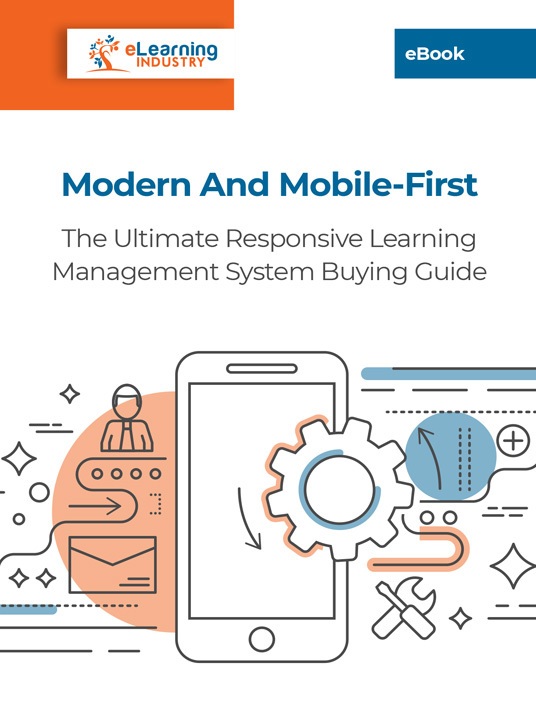Tips To Choose The Right Responsive LMS On A Tight Budget
Everyone’s budget is restricted to some extent. Even massive organizations that cover the globe have finite resources to work with. But startups and SMBs must achieve their online training objectives with limited assets and tight timeframes. No financial safety net involved, which means that failure—or buyer’s regret—isn’t an option. They need to deliver accessible support tools to their team to expand their market reach and build their customer base. This calls for a mobile training portal that doesn’t cost a small fortune and includes all the must-have features. These secrets can help you select a responsive Learning Management System, regardless of your L&D budget.

1. Start With An Online Directory
One of the reasons why organizations stick with their under-performing LMS is that they dread the vetting process. They know how much time and resources it took to find their current eLearning tool because there are so many platforms on the market. However, a free online directory can help you find a suitable replacement or start fresh with a responsive Learning Management System for your SMB. Identify your online training objectives and gaps to define your use case. Then use the online directory to narrow the shortlist of mobile training solutions.
2. Compile A Top Features List
You probably already know your basic LMS requirements. Of course, it needs to be accessible on mobile devices and you need specific reporting capabilities. Compile an essential features list that extends into gamification, customization, and built-in authoring. These are the deal-breaking elements that your new mobile training portal must have to be worth the investment. Ideally, the features should bridge existing gaps and help your L&D team do their job more effectively. It’s also wise to have a backup of "luxury" items that would be nice to have but aren’t fundamental for online training success.
3. Choose An LMS That Suits Existing Assets
Do your top responsive Learning Management System choices fit into your existing toolbox? Is it compatible with your SCORM or Tin Can API conformant authoring tools? What about your pre-built online training resources? Evaluating your assets also helps avoid redundancies. For example, the new LMS has integrated authoring but you already have a reliable eLearning authoring tool. Thus, investing in this all-in-one package might be cost-prohibitive for your organization. Particularly if it’s in a higher price bracket than other non-inclusive LMS options.
4. Evaluate LMS Vendor Support
What level of support does the LMS vendor provide versus the level of support your team requires? The online directory I mentioned earlier includes a detailed list of support options in every listing. So, all you have to do is compare their list to yours, which is based on your team’s LMS know-how and expectations. For example, they may be looking for office-hour phone support to help them through glitches or implementation challenges. Or maybe they only require minimal assistance, such as online FAQs and user forums. This means that you can opt out of the advanced support add-ons and stretch your mobile training portal budget.
5. Select The Best Pricing Model
While some eLearning mobile systems come with a monthly subscription fee, others involve one-time licensing. Evaluate your budget to determine the best pricing model for your SMB. There are benefits and drawbacks in both. Monthly fees free up your funds now, but the cost may increase over time. One-time licensing solutions are more expensive to set up, but you own the LMS software outright. There are also free/open-source platforms, but you must be aware of the hidden fees involved. Consider maintenance, customization, and IT tech support costs. When you factor in all the hidden expenses, paid options are often your best bet.
6. Assess Your Team’s Experience And Skillsets
Many organizations make the mistake of choosing the most robust mobile LMS on the market without thinking about their L&D team. How long will it take them to learn the new features? Is the UI intuitive? Evaluate their skills and LMS comfort zone to find the best eLearning tool for their talents. Another thing to consider is the technical standard. Responsive learning management solutions are generally SCORM or Tin Can API, which dictates how LMS software applications communicate with each other. Host a live round table to get their eLearning feedback and identify potential risks/concerns. For example, one of your HR admins is worried about reporting accessibility. Does the new eLearning tool feature visualizations to help them spot trends? Can they pin relevant reports to their dashboard?
7. Test The Platform For Real-World Performance
It’s finally time to try the new eLearning mobile platform for yourself to see how it performs in the real world and if it lives up to company standards. Run a sample project to test out crucial functions. For example, your team must develop a demo video using built-in authoring tools and assets. Then deploy it across all platforms as well as track employee training participants' performance and engagement on mobile devices. This allows you to evaluate the eLearning tool at every phase of the project, from storyboarding and content creation to real-world performance metrics. You should also incorporate existing assets to see how easy it is to migrate data and integrate your mobile training library.
Limited resources shouldn’t mean limited options. Use these insider secrets to select a mobile-first LMS that doesn’t disappoint and doesn’t break your budget. The best LMS should allow you to repurpose assets and quickly identify areas for improvement as well as offer the ideal level of support for your team’s talents and experience. In short, it must deliver all the features you need and omit extraneous functions that aren’t on your priorities list.
If you want to provide quick, convenient, and meaningful learning experiences to your workforce, download the eBook Modern And Mobile-First: The Ultimate Responsive Learning Management System Buying Guide. You will find insider secrets that will enable you to choose the ideal mobile training platform in order to provide top-notch mobile training and JIT support even when your employees are away from the office.

